Introduction
Technology has played a crucial role in shaping the agriculture sector. It has helped to increase the efficiency of production, conserve and make resources available, and enhance food security. This report covers various techniques and technologies currently available or employed in developing countries to address aflatoxin contamination in food. The practices and technologies mentioned here are based on literature review and interviews conducted with farmers, experts, academia and practitioners based in India and Kenya.
Aflatoxin is a toxin produced by fungi, mainly Aspergillus flavus and Aspergillus parasiticus. It is known to contaminate cereals, oilseeds, spices and tree nuts used as sources of food for humans and animals. Aflatoxin is of great concern because of its acute and chronic toxicity properties which can cause serious health issues like poisoning and liver failure, liver cancer, stunted growth and immune suppression.1 It is observed that aflatoxin contamination occurs largely in tropical and sub-tropical areas, covering developing countries, which provide favorable conditions for the widespread growth of the fungi.2 Cases of outbreak of acute aflatoxicosis have been documented and reported in Asia and Africa, with a major outbreak reported in Kenya in 2004-2005 resulting in more than 100 deaths.2,3
Stages of contamination
The entry or infection points for these aflatoxin-producing fungi could be at any/all of these three stages:
- Preharvest entry of fungus (during plant growth).
- Entry of fungus during harvest.
- Postharvest entry of fungus (after harvest and during processing).
Crops used in staple diets like maize and wheat are susceptible to aflatoxin contamination. Groundnut and cotton seeds are also vulnerable. The studies conducted in a market in Nigeria revealed that wheat contained aflatoxin B1 levels with mean concentration of 19 ± 1.67 μg kg-1 while in Guinea corn and groundnut recorded 30.53 ± 3.37 and 78.21 ± 2.92, respectively.4 It has been estimated that the Philippines, Indonesia, and Thailand bear an annual cost of about 1 billion USD per year due to aflatoxin contamination because of cumulative market, livestock, and poultry losses.5 The World Health Organization (2018) estimates suggest that aflatoxin causes destruction of 25 percent or more of the world’s food crop annually.6 Given the potential of aflatoxin contamination to pose serious health risks and be an economic burden due to crop and trade losses, it clearly becomes important to detect the presence of the contaminant, control its spread, and take precautionary measures to avoid contaminations in crops. There are several techniques and technologies available in the market to deal with aflatoxin contamination The next section explains the existing techniques and technologies, outlines their strengths and weaknesses and their effectiveness to mitigate aflatoxin contamination.
Technologies and Techniques to Mitigate Aflatoxin
Preharvest stage:
The goal of aflatoxin mitigation in the preharvest stage is to prevent damage of the pod or grain while the plant is growing and also prevent the soil from providing the conditions where the fungi can flourish. Methods include weed and insect control, the application of lime or gypsum to the soil, good irrigation practices, and the application of farmyard manure or man-made biological control agents. Groundnuts are more susceptible to aflatoxin contamination because they grow directly in the soil.
Technologies that support Good Agricultural Practices (GAPs):
Damage to pods during preharvest can be caused by insects, or for certain crops, by organisms in the soil such as root rot that can thrive if the soil does not have enough nutrients. Good irrigation practices can reduce aflatoxin levels because it prevents the soil from drying out or from being too moist. Weed control prevents fruit bearing weeds from growing nearby that may create a moist environment where fungi can flourish. Adding gypsum to soil that does not have enough calcium content is a method that suppresses the spread of the organisms and allows the plant to grow strong walls and membranes to resist damage.7 A study conducted during the 2011 cropping season in Tanqua Abergelle Wereda at Tabia Lemlem showed that the combination of supplementary irrigation and the application of gypsum recorded the lowest Aspergillus flavus infection (4.3%).8 A study in India demonstrated that gypsum can reduce aflatoxin by 40% when applied during flowering.9 Farm yard manure follows a similar strategy but with the goal of introducing microbial diversity into the soil to slow the growth of Aspergillus Flavus because it is not able to compete with other organisms. A farmer in Gujarat, India has been practicing organic farming for 12 years and uses highly decomposed farmyard manure (3 years old) in the cultivation of groundnut. The test results obtained in controlling the aflatoxin showed absence of Aflatoxin B1, B2, G1 & G2 using the ELISA test method.10 Another on-farm experiment carried out in Burkina Faso showed similar results with the application of farmyard manure.11
Another product that can be applied to fields to mitigate aflatoxin are man-made biological control agents. By introducing a friendlier strain of Aspergillus flavus that does not produce the aflatoxin, the non-toxic strain competes with contaminated areas and so can protect the crops even during the storage period.12 The International Institute of Tropical Agriculture (IITA) and the United States Department of Agriculture – Agriculture Research Service (USDA-ARS) together with other partners have developed country-specific indigenous aflatoxin biocontrol products called Aflasafe. Each country has its own version of Aflasafe using a mixture of four atoxigenic strains of A.flavus, all found growing naturally in local soils.13 The product only needs to be spread in the field once per growing season and should be spread two to three weeks before flowering. Aflasafe has consistently reduced aflatoxin contamination in maize and groundnut by 80-99% in several countries in Africa.14 The product is still expensive for small farmers, but production is expanding, which may result in the product becoming more accessible.
Mechanical technologies that work to mitigate aflatoxin in the preharvest stage are soil testing devices, controlled irrigation systems, soil irrigation sensors, and gypsum and fertilizer spreaders. Soil testing devices allow farmers to determine the pH and nutrients in the soil to know what may need to be added. Controlled irrigation systems such as drip tapes can save water while ensuring the crop receives only the water it needs at the root. Soil irrigation sensors can help remind farmers when they should water. Lastly, gypsum and fertilizer spreaders provide a more efficient method of spreading fertilizer and manure than traditional methods. All of these technologies are associated with Good Agricultural Practices (GAPs) that have been shown to control aflatoxin in the preharvest stage in addition to increasing crop yield and net return.9
Harvest stage:
The important steps to mitigating aflatoxin exposure at the harvest stage are to harvest the crop at optimum maturity and prevent damage to the pods during harvest. Excessive numbers of overmatured or very immature pods at harvest can result in higher levels of aflatoxin in the final product because in the post-harvest stage the aflatoxin can more easily spread through pods that are not fully formed or damaged.15 Poor harvesting practices can also damage the pods thereby increasing the risk of aflatoxin contamination.16
The harvesting of groundnuts poses a particular challenge because they must be pulled out of the ground. There are two types of groundnut: one that grows in a bunch and another that is spreading or semi-spreading. The bunch type is generally harvested manually, and the spread type is harvested using a blade harrow or ox-plough. The soil should be sufficiently moist to more easily pull the plants up without losing any pods in the soil (see preharvest section about irrigation).17 An affordable technology that was developed to mitigate aflatoxin at the harvest stage is a lifter developed by CTI and ICRISAT for use in Malawi. The tool is made for small holder farmers and designed to be rugged and easy for women to operate while carrying babies on their backs. There are other lifters available, but they are more expensive and often need to be pulled by a tractor.
Figure 1: CTI groundnut lifter.
Postharvest Stage:
The postharvest stage is a critical point in mitigating aflatoxin because it is when the fungus gets room to grow and spread itself if provided a suitable environment. Post-harvest also includes the most steps that a crop goes through before transforming into the food we eat. The steps include:
- Plucking and stripping (groundnut)
- Shelling (groundnut and maize)
- Stripping, threshing, and winnowing (various grains)
- Drying
- Storing and packing
Similar to the preharvest and harvest stages, the mitigation strategies for these various steps follow GAPs and are preventative measures. Using proper sorting, drying and storage technologies can reduce the aflatoxin levels by 63-88% by inhibiting the growth of the fungus.16 Although it is possible for GAPs to be performed in manual processes, technologies save time and therefore prevent pods from sitting on the ground too long in moist conditions where they can be damaged and exposed to mold.
Plucking and stripping:
Plucking and stripping is the process of removing the pods from the groundnut plants and can be done manually or with a plucker or stripper to speed up the process. One type of plucker/stripper is constructed of a wooden frame with a stretched piece of chicken netting.17 Another is a motorized rotating cylinder with teeth that pull the pods from the stems. The pods should be collected for drying as soon as possible after they are plucked.18
Examples of strippers include:
- CTI stripper: Developed in collaboration with ICRISAT, the stripper will be available to smallholder farmers in Malawi by partnering with the National Smallholder Famer’s Association and the Farmers Union of Malawi to promote the tools by distributing them on loan in exchange for the farmers harvests.
- Myrada Groundnut Pod Stripper: Constructed locally it is easy to build and maintain.
Figure 2: CTI Groundnut Stripper Figure 3: Myrada Goundnut Pot Stripper
Drying:
Presence of Aflatoxin in foods is high in warm and humid regions. Therefore, rapid and proper drying of agricultural products helps reduce moisture content which in turn avoids the favorable conditions for growth of the fungi.19 Contamination can be reduced by drying the pods away from the ground on tarpaulins or ventilated stacks and by keeping the drying period as short as possible.9 This can be achieved using dark colored surfaces or elevated mesh.16 There are also many machines available that use different drying methods and come in various sizes. Some examples of dryers include:
- Column dryer: A furnace operated forced air drier that reduces moisture content in Maize to less than 13.5%.20
- Shallow bed drier such as the Easydry M500 Maize Dryer: An economical and portable maize drier targeting smallholder farmers, which can dry 500 kg of maize lowering the moisture level from 18-20% to about 13.5% in 3 hours.21 It is also possible to repurpose the maize dryer to dry groundnuts.
- Solar dryer: Using tarpaulin sheets and shoveling the pods to stir them or using a solar dryer that concentrates solar energy into a compartment to dry crops faster.
Figure 4: Column Dryer Figure 5: Shallow Bed Dryer Figure 6: Solar Dryer
Shelling:
Shellers contribute to reduction of aflatoxin contamination by shelling pods faster and keeping them dry. During hand shelling women often sprinkle water on pods to make them soft increasing the chances of Aflatoxin contamination.
Examples of shellers include:
- CTI Hand sheller: Lead farmers to purchase it and make profits by renting it to other farmers. It benefits the individual smallholder farmers by increasing their production and helping them to get good value for high quality nuts.
- Universal Nut Sheller by Full Belly Project: It is operated with a hand crank and able to shell groundnuts, shea nuts, and coffee beans among others.22
- Iketsetse Single Stroke Maize Sheller
Figure 7: Sheller developed by CTI and ICRISAT Figure 8: Universal Nut Sheller Figure 9: Iketsetse Single Stoke Maize Sheller
Threshing:
Threshing is the action of removing sorghum and grains from the heads of several types of crops such as wheat. Early harvesting and threshing results in consistently lower aflatoxin concentrations and higher gross returns than in delayed harvesting methods.
Examples of threshers include:
- Motorized Multicrop Thresher by Soybean Innovation Lab
- CTI hand operated thresher
Figure 10: Motorized Thresher by Soybean Innovation Lab Figure 11: CTI Hand-operated thresher
Storing and packaging:
Storing is another important step in the post-harvest process because crops must be gathered and kept for a time before being transported to the market. Storage spaces must be clean to limit contamination from spores and other organisms, cool and dry to discourage fungus growth, and insect and rodent free to prevent damage to the pods and spread of fungus. Many smallholder farmers in lower income countries traditionally store agricultural products such as grains in containers typically made from wood, bamboo, thatch, or mud. Recently, metal or cement bins have been introduced as alternatives to traditional storage methods, but their high costs and low accessibility make adoption by small-scale farms limited.12 Polypropylene (PP) or cloth bags are a storage option, but contents can still be contaminated through air movement between bags, even more so if reused because of the presence of existing spores. Hermetic (airtight) bags have been introduced as an affordable solution that control contamination by creating a sealed air barrier so that fungi and pests cannot get in or breath if inside. In a test comparing hermetic and standard cloth bags, pods stored in triple layer bags showed minimum levels of Aflatoxin ranging from 1.3 to 33.5 mg kg-1 with direct storage or with addition of A. flavus and bruchids, whereas levels ranged from 3.5 to 63.7 mg kg-1 in cloth bags.23
Storage solutions include:
- GrainSafe: water resistant and gastight storage bag with a storage capacity of 2900 lbs (based on wheat).24
- Purdue Improved Crop Storage (PICS) bags: Also known as triple layer hermetic bags with a capacity of 90-100 kg
- Small scale metal silo: Made locally out of aluminum and can range in size to hold 200-1000 kg
Figure 12: GrainSafe storage bag Figure 13: Purdue Improved Cowpea Storage (PICS) Bag Figure 14: Metal Silo
Sorting and cleaning:
Sorting is the action of picking out pods that are substandard in quality based on inspection of their physical properties. By removing damaged and discolored pods, Aflatoxins and other contaminating materials can be reduced. Hand-sorting is an effective way of removing pods with visual and is not easy to replace with a machine. Electronic Color Sorting (ECS) is a technique that detects aflatoxin by discoloration of pods.15 There are also screening technologies such as the fluorescent detection of Mycotoxins that estimate aflatoxin levels as a preliminary step to know whether more sorting is required. Some types of Aflatoxin appear fluorescent blue in color while others are fluorescent green.25 Most mechanical sorting and screening technologies are used only in industrial settings since they are expensive to low income farmers.
Research of other physical mitigation methods:
There are many other post-harvest industrial Aflatoxin mitigation methods undergoing experimentation. Physical interventions such as heating, electromagnetic radiation treatment, pulsed light, radio frequency, microwave, ozone fumigation, and chemical control agents have all been tested for their ability to reduce aflatoxin in a contaminated crop. The big challenge with post-contamination interventions is that even if the aflatoxin is destroyed, there is little known about the effects of ingesting the remaining residues.12 Although these methods could be an appropriate investment for large holder farmers, it is the preventative measures that are more appropriate to the small-scale farmer because they are affordable and can have greater benefit by improving overall crop quality and increasing yield.
Test Kits
Farmers can minimize the growth of Aflatoxins by following good management practices. However, in order to guard against contamination, they are advised to use Aflatoxin test kits before they handle (store, sell or transport) their produce. Sometimes the harmful Aspergillus infestations cannot always be spotted with the naked eye therefore a contaminated crop can easily be passed as healthy. It is therefore considered best practice to perform aflatoxin testing at every stage in the seed or grain supply chain.
There are a number of test kits that can be used such as the Elisa test kits, High Performance Liquid Chromatography (HPLC) and AgraStrips. The Elisa test kits and HPLC have to be carried out in a laboratory setting therefore making them inaccessible to most local small-scale farmers. Agrastrip is a one-step lateral flow test that is used to detect the presence of Aflatoxin at the farm level by smallholder farmers before processing their yields. It is considered to be a rapid test method since it allows the farmer to get their results faster than other traditional and laboratory-based methods. The sample preparation time for the AgraStrip takes about 10-15 minutes to prepare and obtain results. Locally in Kenya, it costs about $8 – $10 for one test strip of the AgraStrip. As much as the AgraStrip is affordable and quick to obtain results, its main drawback is that it is not as accurate as the laboratory test method.
Discussion
From the review of technologies that mitigate aflatoxin it is clear that it is very difficult to reduce Aflatoxin by using only one particular method in any crop. The prevention/reduction of Aflatoxin depends on variety of factors such as the types of crops and their physiological properties, the characteristics of the soil, the types of technologies available, and the level of contamination if it occurs. Aflatoxin control is therefore an integrated management approach. All the technologies used during three stages should be taken care of i.e. pre-harvest, harvest and post-harvest stage. This will ensure a significant reduction of Aflatoxin levels in the crops produced.
Supplemental Data:
References
- Battilani, P., Toscano, P., Van der Fels-Klerx, H., Moretti, A., Camardo M., Brera,C. ,.. Robinson, T. (2016). Aflatoxin B1 contamination in maize in Europe increases due to climate change. Nature, Scientific Reports.
- World Health Organization (WHO) and U.S. Centre for Disease Control and Prevention (CDC). (2005). Work group report for the International Mycotoxin Workshop: Public Health Strategies for Preventing Aflatoxin Exposure.
- Lewis, L., Onsongo, M., Njapau, H., Schurz-Rogers, H., Luber, G., Kieszak, S., Rubin, C. and the Kenya Aflatoxicosis Investigation Group. (2005). Aflatoxin Contamination of Commercial Maize Products during an Outbreak of Acute Aflatoxicosis in Eastern and Central Kenya. Environmental Health Perspectives, 113(12), 1763-1767.
- Odoemelem, S. A. and Osu, C. I. (2009). Aflatoxin B1 contamination of some Edible Grains Marketed in Nigeria. Journal of Chemistry. 6(2), 308-314.
- Wu, F., 2014, Global impacts of aflatoxin in maize: trade and human health. World Mycotoxin Journal, 8(2), pp. 137-142.
- World Health Organization (WHO). (2018). Aflatoxins. Food Safety Digest.
- Hell, K. and Mutegi, C. (2011). Aflatoxin control and prevention strategies in key crops of Sub-Saharan Africa. African journal of microbiology research, 5(5), 459-466.
- Gebreselassie, R., Dereje, A., and Solomon, H. (2014). On Farm Pre Harvest Agronomic Management Practices of Aspergillus Infection on Groundnut in Abergelle, Tigray. Journal of Plant Pathology & Microbiology.
- Parimi, V., Kotamraju, V., Sudini, H. (2018). On-Farm Demonstrations with a Set of Good Agricultural Practices (GAPs) Proved Cost-Effective in Reducing Pre-Harvest Aflatoxin Contamination in Groundnut.
- Interview with Karamashibhai Vanpariya, Farmer, Pipli, Keshod, Gujarat.
- Alenyorege, E. (2015). Effect of fertilizer and storage on aflatoxin concentration and nutrient composition of groundnut.
- Udomkun, P., Wiredu, A.N., Nagle, M., Muller, J., Vanlauwe, B. and Bandyopadhyay, R. (2017). Innovative technologies to manage aflatoxins in foods and feeds and the profitability of application. Food Control, 1(4), 12.
- Aflasafe
- Mahuku, G., et al., (2015). Maize lethal necrosis (MLN), an emerging threat to maize-based food security in sub-Saharan Africa, Phytopathology, 105(7), 956-965.
- Uçkun, O. and Var, I. (2014). Monitoring of Aflatoxins in Peanuts.
- Catholic Relief Services, January 2018, Aflatoxin Management for Smallholder Farmers of Maize and Groundnuts: Practices and technologies for detection and prevention
- United Nations Industrial Development Organization (UNIDO), Farmer’s Training Manual on Post Harvest Management of Sorghum, Groundnut and Rice
- Abizari, A., Garti, H.A., Gajate-Garrido, G., Hoffmann, V., Hotz, C., Magnan, N. and Opoku, N. (2018). Technological and Market Interventions for Aflatoxin Control in Ghana: Final Report.
- Paramawati, R., Widodo, P., Budiharti, U., and Handaka, H. (2006). The role of postharvest machineries and packaging in minimizing aflatoxin contamination in peanut. Indonesian Journal of Agricultural Science, 7, 15-19.
- AflaSTOP. Storage and Drying for Aflatoxin Prevention Summary of Drying Technologies.
- AflaSTOP – Storage and Drying. (January 2017). Drying Groundnuts: Adapting the EasyDry M500 Portable Maize Dryer for Groundnuts (the EasyDry G600).
- Full Belly Project
- Sudini, H., Ranga Rao, G.V., Gowda, C.L.L., Chandrika, R., Margam, V., Rathore, A., and Murdock, L.L. (2014). Purdue Improved Crop Storage (PICS) bags for safe storage of groundnuts. Journal of Stored Products Research, 64, 133-138.
- GrainSafe
- Interview with Dr. Harikishan Sudhini, Plant pathologist ICRISAT. Hyderabad, India

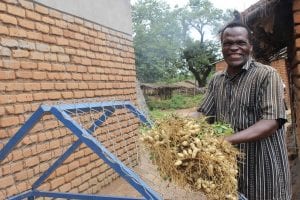
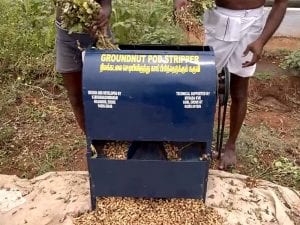
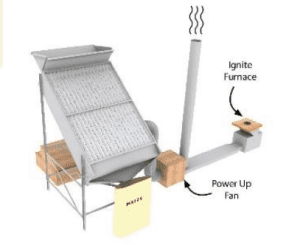
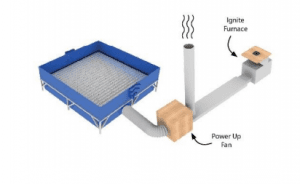
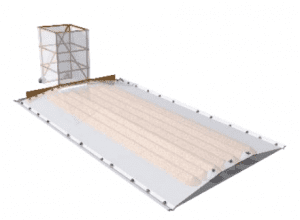
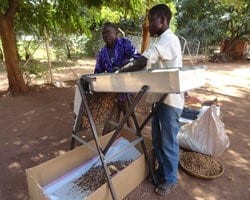
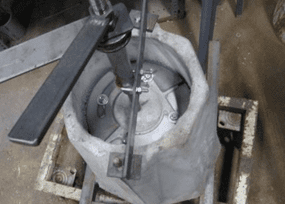
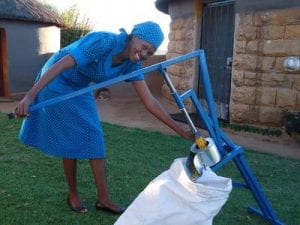
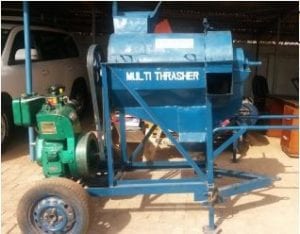
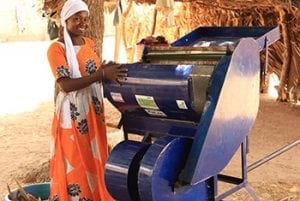

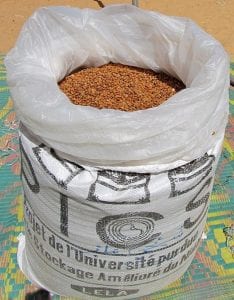

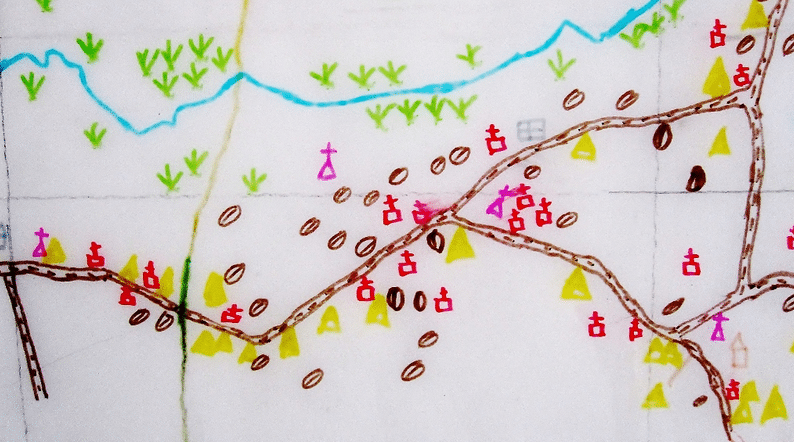
No Comments.